
Hi, I’m a personal finance expert who loves to help you out! I’ll answer your question within a business day. Pinky swear.

The end of the financial year usually means taking some time to look over your finances – even if it’s only to make sure your details are correct for your tax return. But this process also brings with it an opportunity to set goals for the new financial year, particularly when it comes to paying down credit card debt.
“The average card holder is paying around $600 in interest per year if their interest rate is between 15 to 20%,” MoneySmart says, going on to explain the repercussions these numbers could on your long-term financial situation.
“If you have $4,400 of credit card debt and only make the minimum repayments, it will take you 31 years to pay it off and cost you around $14,900 in interest,” it says.
“But if you pay off $216 each month you’d pay off your debt in 2 years and save $9,700 in interest.”
No one wants to pay off a credit card for over 30 years, but then the suggested repayment amount could also be a struggle for many people. The key is to pay down card debt on your terms, and that’s where the new financial year can help.
With a clear idea of your earnings and expenses for the past 12 months, you should be able to work out how much you can reasonably put towards your credit card debt. This guide is designed to make it as easy as possible to do just that, with practical and achievable strategies that you can start to use straight away.
On This Page
Introduction
- Using your tax refund to pay down credit card debt
- Budgeting for credit card repayments
- Getting a balance transfer credit card
- Set up automatic transfers
- Swapping your credit card for a debit card
Using your tax refund to pay down credit card debt
The obvious option for significantly reducing debt at this time of year is to use the money you get back from your tax return. Data from the Australian Taxation Office (ATO) puts the average refund at around $3000, which also works out to be close to 70% of the average credit card balance.
If you put all of a $3000 tax refund towards the average credit card debt of $4095, your balance would drop to $1095. On a credit card with an interest rate of 18%, that would save you around $500 on interest payments if you were only paying the minimum amount, with interest for the year dropping from $679.25 to $181.49.
If you only put half of the tax refund towards your credit card balance, on the other hand, you would have a balance of $2595 and could save around $250 in interest charges paying only the minimum.
But with either of these options (or another nominal amount from your tax refund, you would also be much closer to getting rid of credit card debt. After all, taking a big chunk out of the balance means that the rest of it will drop even more quickly through regular monthly repayments that are higher than the minimum.
Budgeting for credit card repayments
Working out a budget for your credit card repayments will help you clear debt even if you don’t get a tax refund or choose to use the money in another way. A credit card budget can be worked out at any time, and the sooner it’s done, the better the chances are for you to get rid of credit card debt quickly.
The Commonwealth Bank also notes that that a budget is good for managing credit cards because it “lets you see exactly where your money goes each week, what you have left for savings and how much you need to allocate to repay your debts.”
“It can also minimise the tendency to overspend each month because you can see how much money you have to play with.”
So how exactly do you budget for credit card repayments?
The easiest way is to factor regular payments into your everyday budget, or to take money out of your wages whenever you get paid. For example, if you’re paid weekly, you could set aside or transfer $50 every week for your credit card debt. Similarly, if you’re paid monthly, you might want to transfer a reasonable amount, say $200 (depending on your income) straight to your credit card when you get paid.
The ideal dollar figure obviously varies depending on how much you earn, which is why tax time provides such a great opportunity to sort out your credit card: when you get your tax statement back, you’ll see exactly how much you earned and how many expenses you had. From those figures, you can work out what you can afford to pay off your card each month so that you aren’t financially strained but are still being proactive about your credit card balance.
If you want to create a really comprehensive budget for your money in the new financial year, budgeting tools such as the MoneySmart budget planner or a smartphone app like Pocketbook are great for tracking your spending and meeting financial goals.
Getting a balance transfer credit card
Balance transfer credit cards give you a competitive low interest rate on your balance during the introductory period, with some even offering 0% interest for months and months. So far, balance transfer offers in 2015 have included no interest for up to 24 months, giving people a whole two years to pay down debt without worrying about interest charges.
Most credit card issuers update their balance transfer offers after the end of the financial year, so if you haven’t had a chance to apply for a balance transfer card yet, now could be a great time to compare different cards as they all release new offers.
The key to getting the most out of a balance transfer credit card is to pay down the debt before the end of the introductory period. For example, let’s say you have the average card debt of $4095 and want a card with 0% interest for 18 months. With a repayment of $227.50 per month, or roughly $60 per week, you could get rid of the entire credit card debt during the introductory period.
But if you don’t think you’ll be able to clear the credit card debt in the introductory period, there are a couple of other options that help make balance transfers worth it such as choosing a card with a competitive balance transfer offer that reverts to a low ongoing interest rate. The ANZ Low Rate and Bankwest Breeze are examples of two popular cards that offer balance transfer deals and a low ongoing interest rate, which means you will still save money if you switch to them.
Another feature to consider when looking at balance transfer credit cards is the annual fee. Annual fees can be upwards of $100 and may even make the savings you get through a balance transfer deal obsolete, so it’s important to check this out before you apply.
Also keep in mind that some cards waive this fee for the first year, but could then sting you with an extra cost that is easy to forget about 12 months down the line. Generally, no frills or “classic” credit cards have the lowest annual fees, while gold, platinum or other premium options have higher charges. There are also cards that never charge an annual fee, so you do have a lot of options (and all the more reason to compare them before making a decision).
Setting up automatic transfers
Consistency is a key trait for almost any financial goal, helping you stick to plans and stay motivated as you see your balance get closer to where you want it to be (whether it’s reducing a debt or building up savings).
When it comes to credit card debt, there’s already the consistency of a monthly payment, as required by most credit card issuers. You can also make additional repayments, but if it’s consistency that you’re looking for, then consider setting up an automatic transfer.
Depending on your credit card issuer, you will have the option of a monthly, fortnightly or weekly direct debit from an account of your choosing. You can also select how much you want to be transferred each time, from the full amount owed to a fixed dollar value.
While some credit card issuers have a form you can fill out through your credit card account, others suggest you set up the payment from your everyday account. American Express and St George, for example, both have Automatic Payment Plan forms that you fill out to set up this option, while the Commonwealth Bank suggests you set it up from a CommBank Smart Access account (although any everyday banking account should work).
Just check with your issuer on their preference for setting up an automatic payment plan and follow the steps so that you can lock your repayment in and see clear progress on reducing your card debt in the new financial year.
Swapping your credit card for a debit card
The ultimate solution to credit card debt is to stop using a credit card, but it is often easier said than done. Credit cards are incredibly convenient and offer a lot more financial flexibility than other bank accounts, but it is possible to go without them.
For starters, most debit cards now have almost exactly the same features, without the cost of interest rates or annual fees. As for cashflow, setting up a savings account for discretionary spending (ie social activities, luxury items you want) is an alternative way to pay for things that you want without dealing with financial stress down the track.
While moving your credit card to the back of your wallet does mean a few compromises to start with, it will lead to more financial freedom in the long run and frees up your credit card balance for emergencies, major purchases or special occasions, such as a wedding or travel (when it might be more convenient than a loan).
Conclusion
While people often set all their goals at the start of the year, the end of the financial year is one of the best times to look at all of your money matters. Reviewing your current financial situation and setting a few goals gives you a chance to take a more active role in getting rid of debts and building up your wealth – which is a lot easier without a huge credit card debt accumulating lots of interest over the years.
The great thing about the tips outlined here is that they can be used individually or altogether to help you pay down your credit card balance at a pace that’s reasonable for you. That way, you can make managing a credit card easier and get even closer to the life-money balance you really want.

Pauline Hatch
Pauline is a personal finance expert at CreditCard.com.au, with 9 years in money, budgeting and property reporting under her belt. Pauline is passionate about seeing Aussies win by making their money – and their credit cards – work smarter, harder and bigger.
You might be interested in
Recently Asked Questions
Something you need to know about this card? Ask our credit card expert a question.
Ask a question
Hi, I’m a personal finance expert who loves to help you out! I’ll answer your question within a business day. Pinky swear.




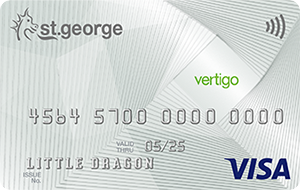
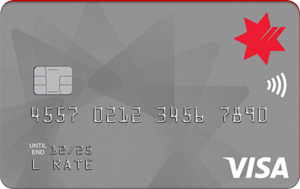
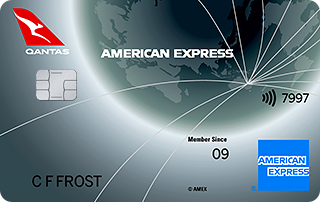
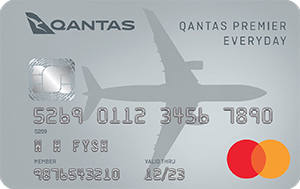
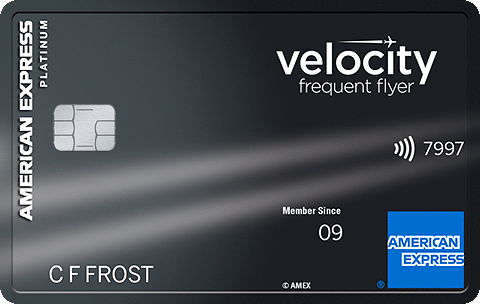







Sipora: Helping You Save Your Spare Change From Card Purchases – Sipora Blog
24 September 2019Sipora: New app targets Buy Now, Pay Later debt culture with innovative round-up Save & Shop alternative - Startup Soda News
24 September 2019Sipora: Helping You Save Your Spare Change From Card Purchases
23 September 2019